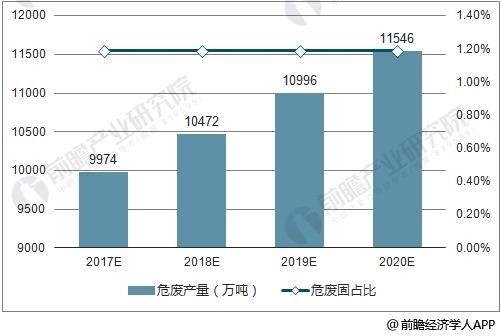
In recent years, the country has repeatedly proposed the establishment of ecological red lines. Compared with the world average level, my country's per capita resource occupancy rate is much lower, and we are facing an increase in the types of endangered animal and plant resources and a decrease in populations. The domestic ecology is very fragile. The environment is severely affected by factors such as industrial pollution and agricultural development. The ecological red line is implemented to ensure ecological safety.
The pace of domestic urban construction is accelerating, and various investment amounts have increased tail-end. Data shows that in 2012, the total investment in environmental pollution control in China was 825.346 billion yuan, and it is expected to be about 998.55 billion yuan by 2017; the domestic urban environmental infrastructure construction investment in 2012 was 506.265 billion yuan , By 2017, about 562.54 billion yuan; in 2012, the investment in domestic urban landscaping construction was 238.04 billion yuan, and in 2017 was about 222.04 billion yuan; in 2012, the investment in domestic urban appearance and environmental sanitation construction was 39.864 billion yuan, and it is expected to reach 60.22 billion yuan in 2017 .
Since last year, many cases of illegal transfer and dumping of solid waste and hazardous waste have occurred in Guangxi, Henan, Anhui and other places, especially in the Tongling section and Chizhou section of the Yangtze River, which have seriously threatened the ecological environment of the Yangtze River and aroused high social concern.
Taking into account the positive correlation between solid waste production and industrial added value and the significant underestimation of hazardous waste production statistics, based on the 2007 census data, the following assumptions are made:
In 2007, the total industrial added value was 11.17 trillion yuan, and the 2007 pollution survey solid waste output was 3.852 billion tons. Based on this ratio, it is assumed that every 100 million yuan of industrial added value will bring about 3.45 tons of solid waste. Taking into account the technology level and energy saving in recent years Increase in consumption capacity, assuming that every 100 million yuan of industrial added value will bring about 3 tons of solid waste. Assuming that the growth rate of industrial added value from 2018 to 2020 is 5%, the output of solid waste in 2020 is estimated to be 970 million tons. According to the 2007 census data, hazardous waste accounted for 1.19% of solid waste. The production of hazardous waste in 2020 will still far exceed the 2016 statistical value, which is expected to be 115 million tons.
2017-2020 China's solid waste production forecast

Source: Compiled by Qianzhan Industry Research Institute
At present, the overall status of my country's industrial hazardous waste treatment industry is characterized by a relatively high level of comprehensive utilization and a low level of harmlessness, and the performance of different sub-sectors is different. Relatively speaking, resource utilization is more economical because it can recover the value of resources, and enterprises that produce hazardous waste can also earn income by selling hazardous waste, so the development is faster and more adequate. However, the technology of harmless disposal is complicated and difficult to deal with. It also brings a large cost burden to enterprises that produce hazardous waste. The development is relatively slow, and there are even a large number of dumping and disposal incidents.